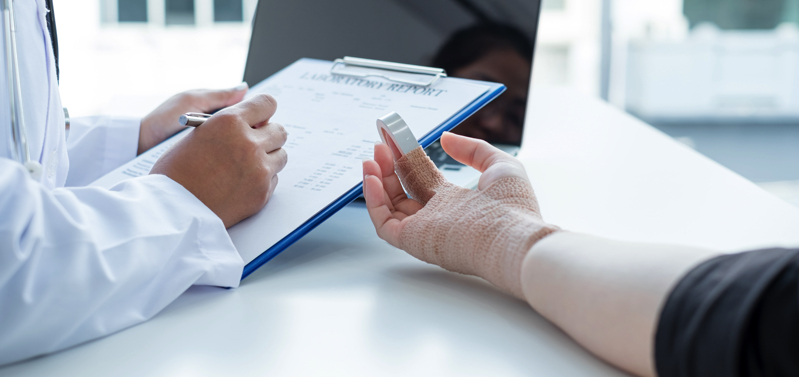
02 Dec How to Zip Through Injuries
How to Zip Through Injuries
Tips to bounce back from injuries comfortably and safely
Cooler weather gets people excited to decorate their houses for the holidays, go on walks or bike rides, or even prep to ski, snowboard, or take the grandkids sledding. But, the upcoming winter can be a dangerous time amid icy walkways and stiff joints. According to the CDC’s latest data, over 300,000 older people are hospitalized for hip fractures each year- 95% of which happen by falling- which means many will be injured and need to use casts, braces, and other equipment. Seniors can be proactive with the recovery process if they suffer an injury this winter by utilizing some simple tips –
Rearrange the home to ensure safety
It’s important to have new safety precautions set up in the home for when one returns from receiving medical care. The use of stairs, reaching for certain appliances or foods in the kitchen, or turning on the lamp in the corner may not be as feasible as it used to be before surgery or crutches. Ask for assistance in rearranging household items, clothes, and even swapping bedrooms so that these new daily hazards can be avoided as much as possible.
Keep in contact with family, friends, and loved ones
Having members of your close family and friends on-hand can ensure you can quickly reach them when a situation arises. If possible, having people lined up to visit you once or twice a day could help as well.
Zip through injuries with the right gear
Some normal day-to-day clothes may not be suitable during injury rehab, especially if one has sensitive stitches, casts, braces, or other bulky medical equipment required to heal properly. Instead of turning to sweatpants, leggings, or pajama pants that can be hard for you or a caregiver to put on, seniors can use adaptive pants such as zipOns. These pants fully unzip on both sides of the legs, and can be put on from a sitting, standing, or lying down position without pulling up through the legs like traditional pants. There are also many adaptive shirt options which have hidden magnetic or Velcro closures for easy dressing.
Follow doctor’s orders
While it may be tempting to jump back into normal life, doing so too quickly poses a higher risk for reinjury and can extend your recovery. The doctor or hospital may advise you to attend physical therapy or follow up appointments, take medicine, or perform exercises/ stretching at home. Creating a checklist of these tasks on a calendar or whiteboard can help remind you what still needs to be done and when each day.
About befree
befree is dedicated to improving lives by addressing the real, everyday challenges of people living with limited mobility, and to making adaptive and inclusive fashion that really works. Though clothing is a basic human need, for millions of people with temporary or permanent disabilities, getting dressed can be an ongoing daily hardship. For more information, visit https://befreeco.com/.




Sorry, the comment form is closed at this time.